Travel Safe
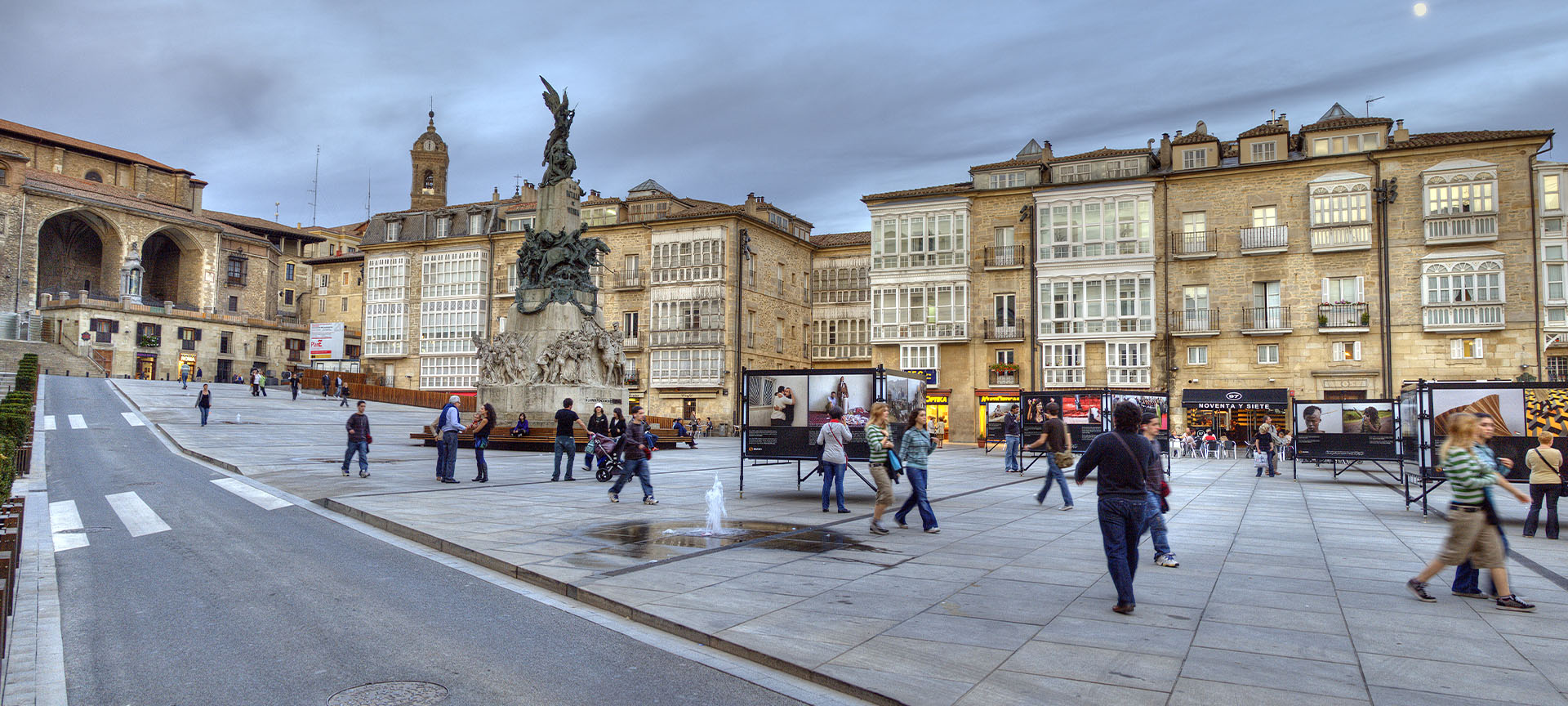

Vitoria-Gasteiz
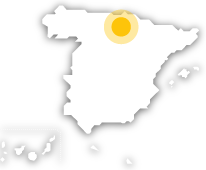
“Los Arquillos” and Plaza del Machete Square

Cathedral of Santa María
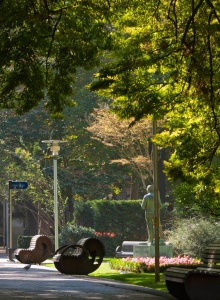
La Florida Park
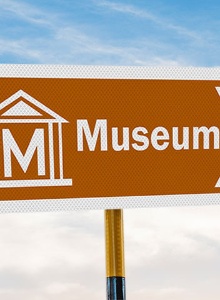
Álava Armoury Museum
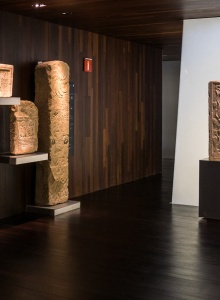
BIBAT Álava Archaeological Museum
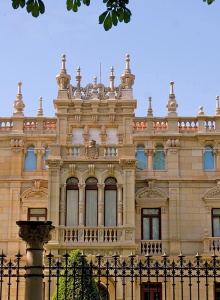
Museum of Fine Arts (Vitoria-Gasteiz)
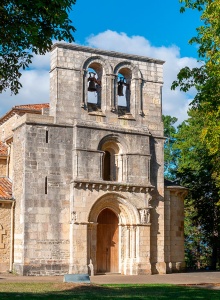
Shrine of Nuestra Señora de Estíbaliz
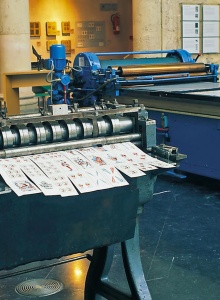
The Fournier Card Museum
Shows, festivals, sports...
View some of the most relevant events you will be able to enjoy at the destination.
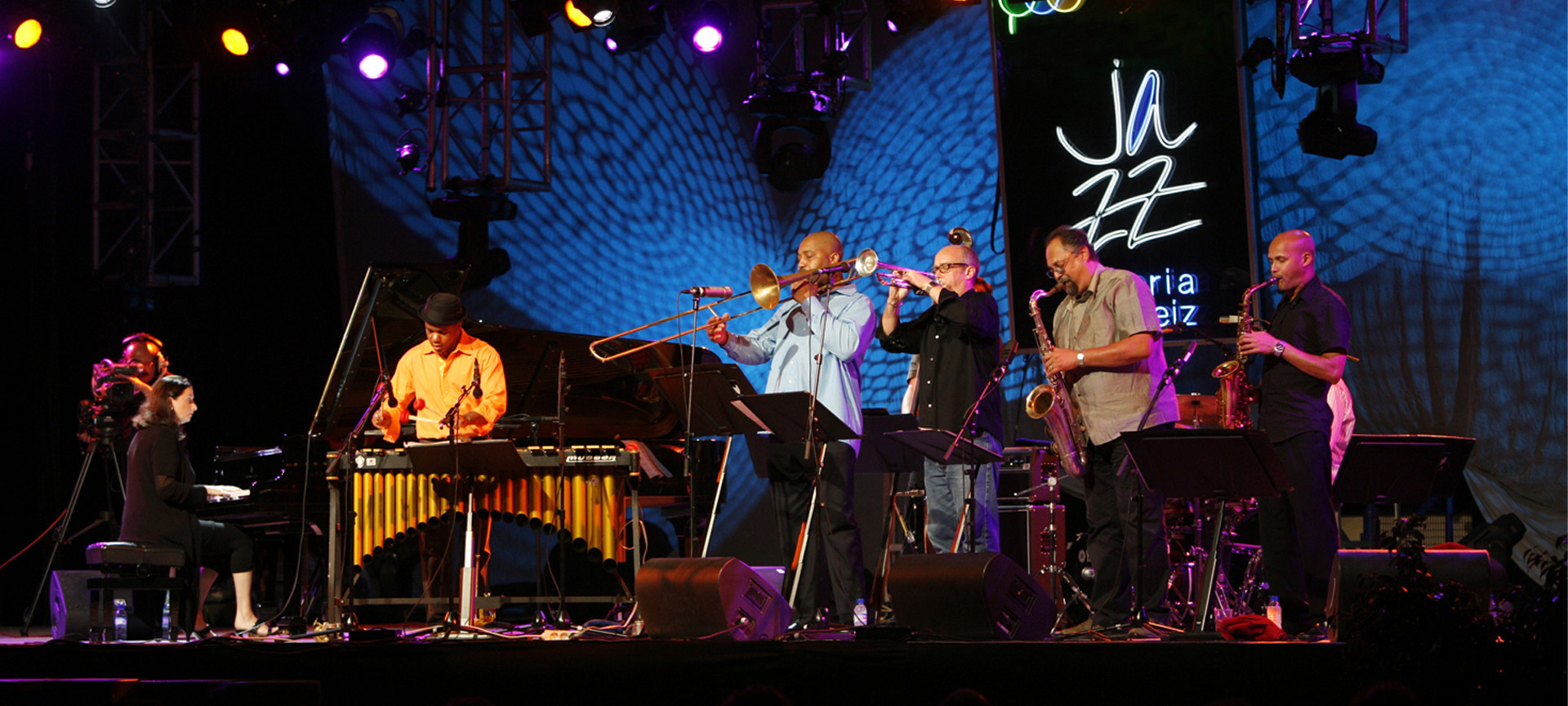
Vitoria-Gasteiz Jazz Festival
15 July 2024 - 20 July 2024
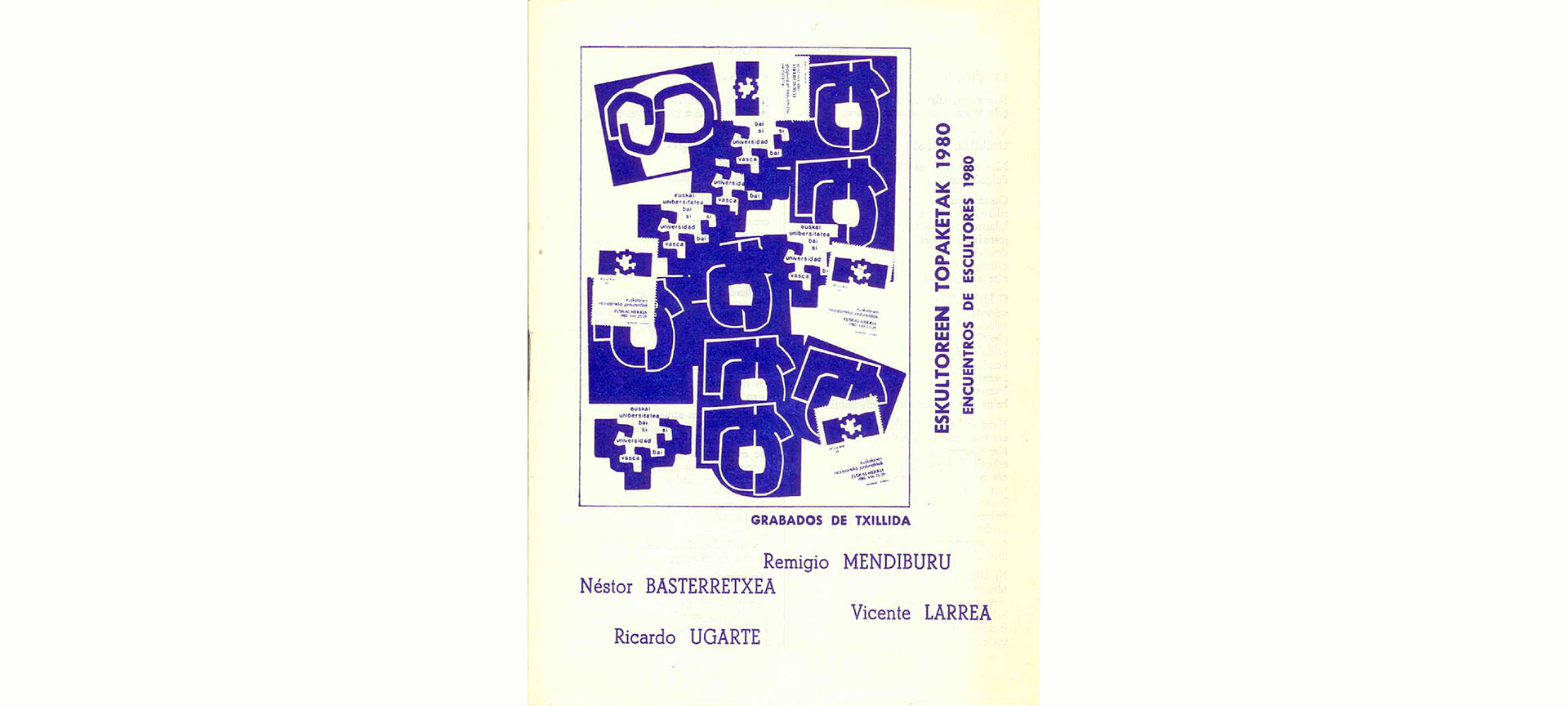
Chillida. Applied uses
15 November 2024 - 26 January 2025

Vitoria International Theatre Festival

Choose between thousands of activities to live your best life on holiday.

- Spanish Basque Country
- Vitoria Tourism – Things to Do in Vitoria
Overview of Vitoria, Spain
Vitoria-Gasteiz is the most modest of all the Basque cities. It doesn’t have a fancy beach like San Sebastian nor a Guggenheim Museum like Bilbao and because of this it is often overlooked. But don’t be so quick to skip it. Vitoria offers visitors many of the same things other Basque cities do but it also offers things they don’t.
Take for example Vitoria’s medieval city center . Many buildings there date back to the 1500’s and earlier and are very nicely preserved. The almond-shaped center is also partly surrounded by a wall from the 11th century along with several impressive watchtowers.
The old town is home to several palaces as well. Bendaña and Escoriaza-Esquivel Palaces are two excellent examples of renaissance architecture that should not be missed. Bendaña Palace holds a museum dedicated to playing cards. It is a rather peculiar subject for a museum, but is none the less interesting.
Outside of the old town there are a few “newer” palaces that are also worth a mention, such as the Palacio de Augustin-Zulueta , which now houses the Museo de Bellas Artes (Museum of Fine Art). Located directly across the way, is the Ajuria Enea Palace where the Lehendakari (President of the Spanish Basque Country) resides. This building is off limits to visitors, but you can still catch a glimpse of it from the outside.
If you arrive to the city by car or bus, you will notice the endless construction of new modern apartment blocks. The city has really expanded in recent years and since Vitoria isn’t limited by any geographical boundaries, it has been easy for it to grow outward.
Vitoria has developed into a suburb of sorts but instead of houses there are apartment buildings. As a result there are lots of open green areas. The most notable is the “green ring” that encompasses the city.
For its number of green spaces, Vitoria was named the Green Capital of Europe in 2012 by the European Commission. This new side of Vitoria offers an interesting contrast to the old center.
Vitoria's Top Things to Do & See
Museum of fine arts.
The Fine Art Museum of Vitoria contains a nice collection of 18 th and 19 th century Spanish art, as well as Basque art from 1850 to 1950. The works here represent both romanticism and realism and focus on portraying rural Basque life as well as the bourgeoisie life in an industrializing Bilbao.
The building itself, surrounded by a beautiful garden, is one of the most splendid mansions in Vitoria. It was built between 1912 and 1916 in an eclectic style, mixing baroque and romanic architecture with a little bit of neo-basque. The owners were Ricardo Augustin and Elvira Zulueta, therefore it is also known as the Augustin-Zulueta Palace.
The building is even more impressive in the interior than on the outside. The wood work is simply amazing and the floors are a little bit different in each room. The chapel and stained windows are also original. Although we like the art collection a lot, we personally find the building most impressive. The Museum of Fine Arts is definitely worth a visit!
Between 1999 and 2001 a new modern building was added to the original palace, providing for more space that was needed for the expanding art collection.
Fortified Wall
The almond-shaped medieval town is set upon a hill that is the only elevation in the plain of Álava. The fortified wall that surrounds the town was built during the second half of the 11 th century (new findings suggest that parts of it may be even older).
The strategic position on the hill helped old Vitoria to become a defensive stronghold coveted by the Kingdoms of Navarra and Castile during the 11 th and 12 th centuries.
Santa Maria Cathedral
Known by the locals as ”the old cathedral,” the Santa María Cathedral is a marvelous example of gothic architecture.
The building was conceived at the beginning of the 13 th century by the King of Castile Alfonso VIII as a church-fortress, rising at the highest point of the hill where the settlement of Gasteiz first began.
In 1994, the cathedral was closed to the public and attempts to save the crumbling structure began. The restoration is ongoing and the Santa Maria Cathedral Foundation is in charge of the work and manages guided tours.
If you are interested in seeing the live restoration in progress and archeological ruins of a 13 th -century sanctuary, then a visit to the old cathedral might be a good idea.
Virgin Blanca Square
Also known as “the old square,” the Virgin Blanca Square is without a doubt the main square of the city. It is not only the geographical center but also central gathering point for the locals, surrounded by a tons of bars and terraces.
Every year on the 4 th of August at 6 pm, locals gather to watch Celedón come down from the tower of the Church of San Miguel, marking the start of the Virgen Blanca Festival .
In the middle of the Virgen Blanca Square stands the monument portraying the “Battle of Vitoria” (21 st of June of 1813) against Napoleon’s troops. The French troops escorting Joseph Bonaparte fought against a conglomerate of British, Spanish and Portuguese troops under the Duke of Wellington.
The victory of the allied troops forced the French troops to retreat from Spain (with the exception of Cataluña) and consequently, Napoleon gave the crown of the country back to Fernando VII, thus ending the Peninsular War.

Plaza Nueva (New Square)
Formerly called the España Square, this plaza was historically used for bullfights and markets. Today, there are a number of nice cafés tucked around the surrounding building.
Moreover, every Sunday a collectors market is held in the New Square. If you are around, it might be nice to check it out. For many Vitorianos, the market is part of their typical Sunday morning. At the market you will find a bunch of children’s trading cards, stamp collections, coins, antiques and much more.
Bibat Museum Complex
Situated in the heart of the Old Town you will find the Bibat Museum Complex. It is formed by the following two buildings:
The Bendaña Palace is a beautiful renaissance mansion dating back to the 16 th century. From the outside it looks like a medieval fortified house while the inside contains renaissance architecture.
Today, it is home to the playing cards museum (called “naipes” in Spanish). The museum has one of the best collections in the world. This is due to the fact that the Naipes Heraclio Fournier card company was based in Vitoria and the founder donated his private collection to the museum. The collection features historic cards from the entire world as well as some of the old machinery that was used in their production.
This is a really unique museum and one of our personal favorites. And for 3 € admission, it is definitely worth a visit.
The Archeologic Museum is held in a modern copper building that was designed by the architect Patxi Mangado in 2008. The structure has 4,200 square meters divided into four floors and two basement levels. It contains around 1,500 original pieces from Álava dating from the prehistoric to the Middle Ages.
Casa del Cordón (Cord House)
The Casa del Cordón was erected in the 15 th century by a converted jew named, Pedro Sánchez de Bilbao. This beautiful gothic building was constructed around the ruins of the Gaona Tower (13 th century), which can still be found in its interior today.
The Cord House got its name from the cord of the Franciscan Order located over the arch of what used to be the main entrance. Its original owner placed it there to prove to everyone what a good converted jew he was.
Some famous guests stayed in the palace during the 16 th century, such as Joan the Mad and her husband Philip I, King of Castile. Also, Pope Adrian VI was staying at the Cord House when he received the news that he had been appointed Pope in 1522.
Since 2010, the Cord House belongs to the Obra Social (Charity Works) of the Caja Vital. It contains a permanent exhibition of which the main highlight is the starry vault located in the inside of the Gaona Tower. There you will also discover some antique Basque furniture pieces, paintings, sculptures and ceramic works.
The Casa del Cordón is not very large and can be visited quite quickly. However, it does make for a great little stop.
New Cathedral
The construction of the María Inmaculada Cathedral started in 1907 by the bishop of Vitoria, monseñor José Cadena y Eleta.
Although the ceremony to lay the first stone was a big celebration, on which even the king took part, the construction stopped after only 7 years when the project’s budget had been exceeded and a new bishop had taken over.
The construction didn’t restart until 1946, several years after the Spanish Civil War had ended. The construction continued slowly and although the cathedral was never completely finished because of the high costs, it was consecrated in 1969 and eventually opened to the public.
The main facade was never finished. It is missing a portico and two twin towers, which were supposed to be similar to the ones of Notre-Dame in Paris. If you are interested on knowing how the building should have looked like, there is a model inside the church showing the full design.
Even though the building was never finished, it is worth a visit. Its massive proportions and stained glass windows are quite impressive.
Eduardo Dato Street
When strolling down the Dato street, approximately half way between the Plaza Nueva and the train station, you will arrive to the Arca Square , where you will find a statue called “el caminante” (“the walker”).
Although it is nothing impressive and probably no one outside Vitoria knows it, for the Vitorianos it is a symbol of the city. “El caminante” is a 3.5 m high bronze sculpture of a very skinny and tall man. Created by Juan José Eguiazábal in 1985, it represents a person that has arrived walking to the city and likes it so much that decides to stay.
Whenver there is an event or celebration in Vitoria, such as the Virgen Blanca Festival or carnival, or also when one of the local sport team wins a championship, el caminante gets properly dressed for the occasion.
Escoriaza-Esquivel Palace
The Escoriaza-Esquivel Palace is a renaissance building constructed between 1530 and 1541 for Fernando López de Escoriaza, the doctor of King Henry VIII of England, and his wife Victoria de Anda y Esquivel. It is one of the best examples of civil renaissance architecture in Vitoria.
The façade of the Escoriaza-Esquivel Palace features a plateresque (style of architecture found only within Spain) relief, where the busts of its owners are depicted. Behind its façade you will find a spectacular inner patio with a double archway.
Artium Museum
Inaugurated in 2002, the Artium is a modern art museum with a collection consisting of some of the most important Basque and Spanish artists. The collection is comprised of 3,000 pieces from the 20 th and 21 st centuries (Dalí, Picasso, Miró, Chillida are all included).
The Artium Museum stands next to the Old Town of Vitoria, in the same location where the bus station previously stood. In the square that surrounds the building, you will find a couple of sculptures from the 20 th century. The most notable one is called “La Mirada” (2001) from Miguel Navarro, which towers 45 m (147 ft) into the air.
The museum is also home to a documentation center and organizes educative activities to “teach art to the children.” There are also temporary exhibitions, many of which are done in collaboration with other european museums.
Parque de la Florida (Florida Park)
Originally created in 1820 as a botanical garden, this nicely manicured park is located in the very center of the city and is a popular meeting place for the Vitorianos. Inspired by the French gardens from the beginning of the 19 th century, this park, with its winding paths, definitely has a romantic aura to it.
The Florida Park is not only full of beautiful hidden corners but is also home of over 90 species of trees and 70 species of plants. The 40 most important species have nameplates.
During spring and summer, live music is offered at the bandstand, which is very popular among older local couples.
Within the park there are also two cafes/bars. Both of which have outdoor terraces.
Ajuria Enea Palace
Since 1980, the Ajuria Enea Palace has been the residence of the President (“Lehendakari” in Basque) of the Basque Country. It has become the Basque equivalent of the “White House.”
The palace was constructed in 1920 by the Swiss architect Alfred Baeschlin as a private residence for the local businessman Serafín Ajuria Urigoitia. From the name of the businessman comes the name of the palace, Ajuriaenea which means “from Ajuria” in Basque.
The building has been described as the perfect example of neo-basque architecture. This is exemplified on the facade which features double archways on the floor level, balconies and heraldic elements on the first floor, and lastly arched windows on the top level. The interior contains other elements of important historic and artistic value.
Virgen Blanca Festival
With his speech and the txupinazo, the festival starts. The next 5 days are full of activities and events for children and adults and of course, lots of partying.
Other Places of Interest in Vitoria
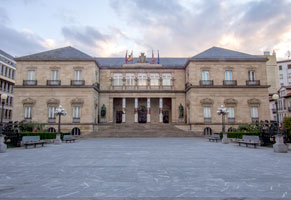
Palacio de la Diputación(Provincial Council Palace)
The Palacio de la Diputación currently holds the provincial council of Álava. The local architect Martín Saracíbar built it in two phases between 1833 and 1858 in a late neoclassical style.
In front of the palace, you will find the Province square (“Plaza de la Provincia”) with a statue to a big defender of this province's special privileges, Mateo Benigno de Moraza. The government uses this square for celebration of cultural acts and other festivities, such as the festival of the patron saint of the province of Álava on the 28 th of April ( San Prudencio ).
Torre de Doña Otxanda (Doña Otxanda Tower)
The Doña Otxanda Tower is one of the many defensive buildings from the old walled town of Vitoria. The original house-fort was built at the beginning of the 15 th century to watch one of the gateways into the town.
In the 16 th century, when Andrés Martínez de Iruña and his wife Catalina de Álava decided to move into the city, they restored the building which became a palace-house. The building was named after their daughter “Otxanda.”
The Doña Otxanda Tower was restored in 1970 and since 1986, it has housed the Nature Science Museum of Vitoria. The museum is divided in two main sections. The first floor is dedicated to geology and the second to botanic and zoology. It also contains an exclusive collection of ambers with insects.
The Nature Science Museum of Vitoria is mostly visited by locals and groups of school children. The inside is nothing too special and unless you are very interested in natural science or perhaps traveling with children, we recommend just viewing the building from the outside.
Practical information Opening times: - Tuesday to Friday: 10am - 2pm & 4pm - 6:30pm - Saturday: 10am - 2pm - Sunday and holidays: 11am - 2pm - Monday: closed
Admission: Free

Plaza del Machete & Palacio Villasuso (Machete Square & Villasuso Palace)
The other main attraction in Machete Square is the Villasuso Palace, which is actually much older than the square itself. The palace was built in 1539 for Martín de Salinas, ambassador to the court of King Charles V. The inside of this renaissance palace still contains remnants of the old city wall as well as other traces of its medieval past.
Inside the palace, there is a Flemish tapestry from 16 th century located in the exhibition hall. It belongs to the Brussels School and represents the flight of Aeneas and his family from Troy. Other features of the building are its main entrance, situated next to the top of the stairs, with the Salinas shield on the top and the big shield in the corner of the building by the Machete Square.
Today, it is used as a conference building and it sometimes holds temporary exhibitions.
Practical information - Villasuso Palace Opening times: - Monday to Friday: 11:30am - 1:30pm & 5:30pm - 8:30pm * May vary depending on exhibition and occupancy of the building. Ask at the tourism office for up to date information.
Admission: free
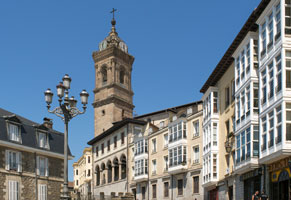
Iglesia de San Vicente (San Vicente Church)
The San Vicente Mártir Church was the last church to be built in the Old Town. It was erected during the 15 th and 16 th centuries on top of the old fortress of San Vicente, which defended the south-east corner of the city.
The main altarpiece deserves special mention. It was finished in 1749 in churrigueresque baroque style, featuring the image of San Vicente. The tower was rebuilt in the second half of the 19 th century in neo-byzantine style.
Practical information - During summer, the tourism office organizes guided visits. - The Santa Maria Cathedral Foundation offers a guided tour dedicated to the medieval wall of the city which includes a visit to the roof/ceiling and tower of the San Vicente Church.
Opening times: The church is open 30 minutes before and after each service. There are masses at the following times: - Monday to Saturday: 11am & 7:30pm - Sunday and holidays: 10am & 12pm

Iglesia de San Miguel Arcángel (San Miguel Arcángel Church)
The San Miguel Arcángel Church is a gothic-renaissance temple that contains the chapel of the Virgen Blanca, patron saint of Vitoria-Gasteiz. It was built at the end of the 14 th century, on the hill right outside of the wall that surrounded the original town.
From the church’s balcony, every 4 th of August at 6 pm the chupinazo (launch of a firework) takes place and Celedón descends from the tower of the church, signifying the start of the annual Virgen Blanca Festival . There is also a statue of Celedon along the handrail in front of San Miguel.
Practical information During summer, the tourism office organizes guided visits.
Opening times: The church is open 30 minutes before and after each service. There are masses at the following times: - Monday to Saturday: 11:30am & 7:30pm - Sunday and holidays: 8:30am, 11:30am & 12:30pm

Palacio de Montehermoso (Montehermoso Palace)
The Montehermoso Palace was built in 1524 by the noble Montehermoso family in renaissance style. The building is noteworthy for both its architecture and for being the residence of Joseph Bonaparte during his short and disastrous stay in Vitoria in 1813. The Battle of Vitoria was the final blow in the war and it sent Bonaparte packing for France.
The main facade of the Montehermoso Palace was rebuilt at the end of the 19 th century in neoclassical style. The interior of the building is quite bare, but it does have some nice modern touches. An example of this is the opening near the main stairwell that features wooden cube structures housing the restrooms. Today, the palace functions as a cultural center and is used for various exhibitions.
Practical information Opening times: - Tuesday to Saturday: 11am -2 pm & 6pm to 9pm - Sunday and holidays: 11am - 2pm
Website: http://www.montehermoso.net
Hotels in Vitoria
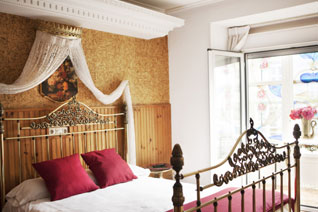
Search Hotels, Compare & Save
Eat & drink in vitoria, txikiteo in vitoria.
The txikiteo is similar to a pub crawl, except instead of the focus being solely on drinking, delicious pintxos are thrown into the mix. The idea is to go to one bar after the next sampling pintxos and having something to drink. This is usually done by groups of friends and is most popular on Friday and Saturday nights.
Pintxo-Pote
The pintxo-pote has become a very popular activity among the Vitorianos in the last years. Its simple name says exactly what it is: you order a drink, which is a pote (wine, cider or soft drink) and you get the pintxo of the night for free.
It takes place on Thursday and Friday night in different parts of the city and there are a few specific streets where the participating bars serve drinks and pintxos for between 1 and 2 euros a pop.
Once you find one participating bar, you can usually find a poster on the inside that advertises the other bars in the neighborhood that are also taking part. Take note though that these pintxos are rather simple and not something that will win any awards. The pintxo-pote is less about gastronomy and more about the social aspect.
Bars & Restaurants
Get In & Around
Once you are in Vitoria, most places are reachable by foot. If you need to go from one end to the other, then the bus system, operated by Tuvisa, is quite easy to use as well.
Another option would be to take the tram. There are two tram lines in Vitoria, connecting Ibaiondo (Line 1) and Abetxuko (Line 2) with the city center.
Arriving to Vitoria
PLANE – Vitoria-Gasteiz has a small Airport (Aeropuerto de Foronda) 8 km north of the town, but it has only a couple of national flight destinations. The most common way to arrive to Vitoria by plane is flying into Bilbao (65 km away) or Madrid (354 km away). There are buses almost every hour between those two cities and Vitoria, taking around 1 and 4 hours respectively.
CAR – A rental car is really great to have in the Basque Country. It makes for access to some parts of the region such as San Juan de Gaztelugatxe and to the sagardotegis (traditional basque restaurants in the countryside) much easier.
Driving along the coast and through the Basque interior is beautiful. If you do rent a car, we recommend not staying on the highway the whole time and drive through the country side as it is very rewarding and you get to see a part of basque life that you would otherwise not be able to.
Some of the highways are also toll roads in the Basque Country. The most expensive one is between Vitoria and San Sebastian and costs around 12 €. If you take the alternative free route, it takes about 20 minutes longer, but it much more scenic.
Car Rental – Search, Compare & Save
BUS – Since March 2015, Vitoria’s new bus station is located in the Euskaltzaindia Square (next to the Basque Government). Although it is further from the city center than the previous station, it is well connected by both tram and various bus lines (L2, L4 and L8) to the center and other parts of the city.
From Vitoria, there are buses to Bilbao (1h), Pamplona (1h), San Sebastián (1,5h), Madrid, Barcelona, etc.

TRAIN – It is possible to get into Vitoria by train. The train station is located at the end of the Eduardo Dato street. The line Madrid-Irun stops in Vitoria and the Alvia train connects Vitoria with Madrid in 3 h and 45 minutes.
There are trains from many parts of Spain, Portugal and France (including overnight trains from Paris and Lisbon). Check RENFE for the Spanish train network and Euskotren for the Basque train network.
Other Places of Interest in the Surroundings
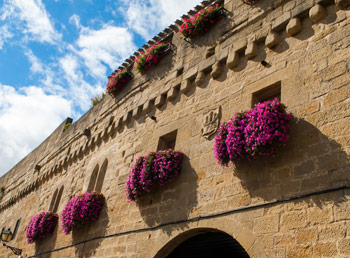
Map – Things to Do in Vitoria
Is Eusko Guide helping you plan your trip?
If so, please consider booking your hotel through the links to booking.com found on our website or use the following link: https://www.booking.com/?aid=360107
That way, you get the best rates on your hotels and at the same time, it helps us to continue contributing to this site. Everyone wins!
- The Top 10 Things To...
The Top 10 Things to Do and See in Vitoria-Gasteiz, Spain

Vitoria-Gasteiz is located in Spain’s Basque Country , and although it may not be as well known as Bilbao or San Sebastian , it’s definitely worth a visit. From its own modern art museum to its magnificent cathedral, fine dining restaurants, and its playing card museum, here are our top ten things to do in the city.
1. browse the pieces at artium.
Vitoria’s modern and contemporary art museum, the Artium , was inaugurated in 2002, and features works by artists such as Miró, Picasso, Tàpies, Ameztoy, Chillida and Basterretxea. It also hosts a rotating schedule of temporary exhibitions, and is celebrating its 15th anniversary this year. Artium, Francia Kalea, 24, Vitoria-Gasteiz, Spain , +34 945 20 90 00

Artium, Centro-Museo Vasco de Arte Contemporáneo, Vitoria-Gasteiz | © Zarateman / Wikimedia Commons
2. Explore the Museo Bibat
The Bibat is housed in the Bendaña Palace and is actually two museums combined – the Museo de Arqueología and the Museo Fournier de Naipes. The Archeological Museum is divided into three floors and includes pieces from the Paleolithic era, the Iron Age, Roman times and the Middle Ages, all found around the town of Vitoria. It also features huge screens that bring the past to life. The Museo Fournier de Naipes is a playing card museum and displays cards dating as far back as the 15th century. It is based on the collections of the Naipes Heraclio Fournier card company. Bibat, Cuchillería Kalea, 54, Vitoria-Gasteiz, Spain , +34 945 20 37 00

Museo Bibat, Vitoria-Gasteiz, Spain | © Guyletsbuild / Wikimedia Commons
3. Marvel at the Catedral de Santa María
Building, Cathedral
Vitoria’s imposing María Inmaculada Cathedral is quite a sight to behold. It was first constructed in 1907; however, it was stopped soon after, due to financial problems. The building work was abandoned for many years and only continued in after the Spanish Civil War . Even though it was consecrated as a cathedral in 1969, the building work even today has still not been fully completed. Catedral de Santa María, Plaza Santa Maria, Vitoria-Gasteiz, Spain , +34 945 25 51 35

Vitoria Gasteiz Cathedral | © Zarateman / Wikimedia Commons
5. Discover the Museo de Armería
Vitoria’s armoury museum is a must-visit for all those interested in medieval warfare. It details the evolution of offensive and defensive weaponry throughout history, and displays everything from weapons to armour, costumes and other war-related objects. Look out for the sections on African, Asian and Arab weaponry, home to some fascinating pieces. Museo de Armería, Paseo Fray Francisco, 3, Vitoria-Gasteiz, Spain , +34 945 18 19 25

Vitoria-Gasteiz Museo de Armería | ©Zarateman / Wikimedia Commons
6. Stroll down the Paseo de los Arquillos
Vitoria’s neoclassical covered arcade – the Paseo de los Arquillos – was designed by the Victorian architect Justo Antonio de Olaguíbel, and was built between 1787 and 1802. Located in the heart of the city, it acts as a bridge between the historic centre and the modern town. Paseo de los Arquillos, Vitoria-Gasteiz, Spain
7. Visit the Iglesia de San Miguel
The Iglesia de San Miguel Arcángel is located in Vitoria’s Casco Viejo, or Old Town – a gothic church, it was constructed during the 14th century. Here you’ll find the chapel of the Virgen Blanca, the patron saint of the city and a polychrome carving of her, made in the 19th century. Iglesia de San Miguel, Plaza de la Virgen Blanca, Vitoria-Gasteiz, Spain , +34 945 23 12 90

Iglesia de San Miguel, Vitoria-Gasteiz |© Zarateman / Wikimedia Commons
8. See Spanish art at the Museo de Bellas Artes
Housed in the Palacio de Augusti, the Museum of Fine Arts is dedicated to Spanish art from the 18th to the 19th centuries. It features works from Salvador, Maestru, Zuloaga, Díaz de Olano, Amárica and Aspiazu. Museo de Bellas Artes, Paseo Fray Francisco de Vitoria, 8, Vitoria-Gasteiz, Spain , +34 945 18 19 18

Museo de Bellas Artes, Vitoria-Gasteiz, Spain | © Basotxerri / Wikimedia Commons
9. Check out the Museo Diocesano de Arte Sacro
Located inside the Catedral Nueva María Inmaculada, the Museum of Sacred Art showcases collections all the way up to the 20th century. The museum is split into five sections according to material, for example, stone, silver and canvas, and is ordered chronologically. Museo Diocesano de Arte Sacro, Calle del Monseñor Cadena y Eleta, Vitoria-Gasteiz, Spain +34 945 15 06 31

Museo de Arte Sacro, Vitoria-Gasteiz | © Zarateman / Wikimedia Commons
Cycle along the Anillo Verde
Vitoria-Gasteiz is a very green town, and around its outside is a a green belt known as the Anillo Verde. Not just a green space, it’s actually series of parks, marshes, ponds and meadows, and is the perfect spot for a bike ride. Vitoria was actually named the European Green Capital in 2012 because of its green commitment.

Since you are here, we would like to share our vision for the future of travel - and the direction Culture Trip is moving in.
Culture Trip launched in 2011 with a simple yet passionate mission: to inspire people to go beyond their boundaries and experience what makes a place, its people and its culture special and meaningful — and this is still in our DNA today. We are proud that, for more than a decade, millions like you have trusted our award-winning recommendations by people who deeply understand what makes certain places and communities so special.
Increasingly we believe the world needs more meaningful, real-life connections between curious travellers keen to explore the world in a more responsible way. That is why we have intensively curated a collection of premium small-group trips as an invitation to meet and connect with new, like-minded people for once-in-a-lifetime experiences in three categories: Culture Trips, Rail Trips and Private Trips. Our Trips are suitable for both solo travelers, couples and friends who want to explore the world together.
Culture Trips are deeply immersive 5 to 16 days itineraries, that combine authentic local experiences, exciting activities and 4-5* accommodation to look forward to at the end of each day. Our Rail Trips are our most planet-friendly itineraries that invite you to take the scenic route, relax whilst getting under the skin of a destination. Our Private Trips are fully tailored itineraries, curated by our Travel Experts specifically for you, your friends or your family.
We know that many of you worry about the environmental impact of travel and are looking for ways of expanding horizons in ways that do minimal harm - and may even bring benefits. We are committed to go as far as possible in curating our trips with care for the planet. That is why all of our trips are flightless in destination, fully carbon offset - and we have ambitious plans to be net zero in the very near future.

Bars & Cafes
The top pintxo bars in vitoria-gasteiz, spain, culture trip spring sale, save up to $1,100 on our unique small-group trips limited spots..

- Post ID: 1229038
- Sponsored? No
- View Payload
Vitoria-Gasteiz

- 1 Understand
- 2.1 By plane
- 3.1 By bike
- 3.3 By tram
- 3.4 By taxi
- 7.2 Mid-range
- 7.3 Splurge
Vitoria-Gasteiz ( Spanish : Vitoria , Basque : Gasteiz ) is in the heart of the Basque Country in Spain . The old town has some of the best preserved medieval streets and plazas in the region and it is one of very few cities with two cathedrals. The city also holds well known festivals such as the Azkena rock festival, FesTVal, Vitoria-Gasteiz jazz festival, and the Virgen Blanca Festivities.
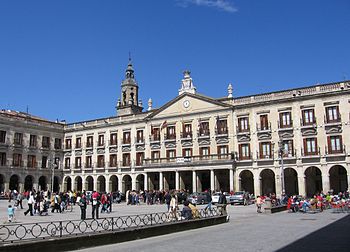
Understand [ edit ]
Vitoria-Gasteiz is the provincial capital of Alava , and has been the political capital of the Basques since the 20 May 1980. Spanish is the main language, but knowledge of Basque is common. English is not widely spoken. The Basque language is called Euskera and nobody knows exactly the origin of this language.
Visitor information: Tourist office at Spain Square (Espainia Plaza/Plaza España) 1 is open daily from 09:00 till 19:00, closed at midday.
Get in [ edit ]
It is 66 km south of Bilbao, 114 km from San Sebastian and 351 km from Madrid .
By plane [ edit ]
- Bilbao Airport ( BIO IATA ) offers more connections and is 70 km (43 mi) away. You can visit Vitoria-Gasteiz coming from Bilbao Airport (Loiu) on a toll road or using public transport (Autobuses La Unión).
By bus [ edit ]

The coach station is north-west of the centre at Euskaltzaindia Plaza with connections to all major Spanish cities including Bilbao, Burgos, Santander, Zaragoza, Pamplona and Madrid.
There is a left-luggage facility at the Coach Station (to the east of the city centre). Cost is roughly €1 per bag per day, and you can leave luggage for several days.
Get around [ edit ]

In the south of the Basque Country, Vitoria-Gasteiz is a city without sea. To the north, 66 km away is the city of Bilbao , and 114 km away is the beautiful city of San Sebastian . The south part of Alava province, is called La Rioja Alavesa, where the visitor can taste some of the best red wines of the world. There are a lot of touristic tours, and you can find more information about in the following website: [1] . The province to the south of Alava is La Rioja , where the cultivation of wine is one of the most important attractions.
Vitoria-Gasteiz is a very small city. Virtually everything you will want to see is reachable on foot. If you do not fancy walking there are several other proposals to move around:
By bike [ edit ]
Free bike hiring service in several spots through the city: [2] [formerly dead link]
Tuvisa . Official information on times and bus network (only in Spanish): [3] [formerly dead link]
By tram [ edit ]

Euskotren operates the green tram of Vitoria. There are only two lines from Angulema Street in the centre of town to the northern quarters of Abetxuko and Ibaiondo (each 15 minutes). Single tickets are sold from machines at tram stops. Don't forget to validate the ticket before boarding.
By taxi [ edit ]
Taxi Iberia
Radio Taxi Gasteiz , Santa Mª, 9-3º, +34 945 27 35 00, [email protected]
Patxi Taxi +34 656 710 167, [email protected]
See [ edit ]

- 42.841721 -2.679702 3 Fine Arts Museum ( Arabako Arte Ederren Museoa ), Frai Francisco ibilbidea, 8 . Tu-Sa 10-14, 16-18:30; Su 11-14 . ( updated May 2023 )
- 42.849665 -2.671106 4 Fournier Playing Card Museum , Cuchillería, 54 . History of all kind of Cards free . ( updated Jul 2023 )
- Archeological Museum , Cuchillería, 54 . At same location as Fournier Playing Card Museum free .
- Museum of Natural History , Fundadora de las Siervas de Jesús, 24 , ☏ +34 945 181924 . Several Collections on Minerals and Fauna, and a special one on Ambar. free .
- Itinerario Muralístico de Vitoria-Gasteiz ( IMVG ), Correría 101 , ☏ +34 633-184-457 . Guided tours of "La Ciudad Pintada" a street-level gallery of community created public artworks. Fridays at 18:00 and Saturdays at 11:30 or by special appt. Don't miss out on all the secrets these monumental murals hide, and see the old city through the eyes and the art of its current inhabitants. €4 .
Do [ edit ]

- Night of 27 April and day of 28 April. San Prudencio Saint. On the eve bands of trumpeters, clarinet players and drummers meet in the Plaza de la Provincia and play in an open-air concert. Afterwards parade of drummers and txistu players around the city center. Visit to Armentia's Saint Prudencio church. Eat of scrambled perretxikos (mushrooms found locally) and snails. Extremely popular.
- Mid July. Festival de Jazz de Vitoria Gasteiz .
- 4th August till 9th August. "Fiestas de La Blanca".
- June. Azkena Rock Festival.
Move around to see the atmosphere!
City Centre:
- Early at night: Plaza Virgen Blanca, Calle Dato, Calle Postas
- Medieval Area Main streets: Zapatería, Cuesta de San Francisco, Cuchillería, Pintorería, Nueva Dentro, Nueva Fuera
- Ensanche Area Main streets: Calle Dato, Calle Postas, Calle San Prudencio.
- Football: Deportivo Alavés were promoted in 2023, so they now play soccer in La Liga, Spain's top tier. Their home ground is Estadio Mendizorrotza (capacity 20,000) 1 km southwest of city centre.
- Basketball: Saski Baskonia are perennial contenders in the domestic ACB and in continent-wide EuroLeague. Baskonia's home of Fernando Buesa Arena has 15,000 seats.
Buy [ edit ]
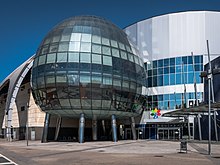
Two new shopping malls were opened in the north of Vitoria on the road going to Bilbao comprising grocery, DIY, cinemas, bars and everything else you need.
- El Boulevard .
- Centro Comercial Lakua Duque de Wellington, 6.
Or go to the traditional small shops in the town centre such as Calle Dato. This is the place where you find Vitoria-Gasteiz's best shops and bars as well.
Leather and shoes is always an option in Spain and especially in Vitoria-Gasteiz. Ayestaran in Calle Dato is a place where you can find nice stuff, but it is expensive.
Corte Ingles is Spain's flagship retailer and the store is in the centre of the town: you can probably find everything you want, but it is pricey by Spanish standards.
Eat [ edit ]

Traditionally you can have a few small drinks in the bars around the town center and enjoy this with some tapas. Usually every bar has one speciality and it is interesting to taste them and then you go to another bar. The boiling point for bar visits is at 14:00 just before lunch time. The Basque cuisine is one of the best in Spain and Vitoria has restaurants in all categories.
Budget [ edit ]
- 42.843491 -2.672557 1 Saburdi Taberna , Eduardo Dato Kalea, 32 . One of the most famous bars in Vitoria-Gasteiz. You can find a great variety of small snacks and everything is of the highest quality. The pancito con jamon is excellent. ( updated Feb 2023 )
- 42.844265 -2.666844 2 Bar Txiki , C. Jesús Guridi . ( updated Feb 2023 )
- 42.847551 -2.675851 3 Bar - Restaurante Casa Juan , Provincia Plaza, 16 . ( updated Feb 2023 )
- 42.848018 -2.674764 4 Neptuno , Pedro Egaña Kalea, 4 . ( updated Feb 2023 )
- 42.845797 -2.669873 5 Restaurante Green Postas , Calle de Postas, 19 . ( updated Feb 2023 )
- 42.850677 -2.663755 6 Restaurante Itxaso II , Palencia Kalea, 16 . ( updated Feb 2023 )
- 42.854874 -2.675237 7 Restaurante "Donde Pepe” , Simon de Anda Kalea, 11 . ( updated Feb 2023 )
Mid-range [ edit ]
- 42.847071 -2.671497 8 El Toloño taberna , San Frantzisko Aldapa, 7 . Renowned of having delicious and unusual pintxos. ( updated Feb 2023 )
- 42.844951 -2.674183 9 PerretxiCo , San Antonio Kalea, 3 . Excellent creative pintxo selection. ( updated Feb 2023 )
- 42.845398 -2.662617 10 Restaurante La Bodeguilla Lanciego , Olagibel Kalea, 60 . ( updated Feb 2023 )
- 42.843241 -2.670446 11 Mesón Restaurante , Ramon Ortiz de Zarate Kalea, 5 . ( updated Feb 2023 )
- 42.84863 -2.675826 12 El Clarete , Zerkabarren Kalea, 18 . ( updated Feb 2023 )
Splurge [ edit ]
- 42.845934 -2.675099 13 Sagartoki erretegia , C. el Prado, 18 . Has been awarded with the best Spanish pintxos bar in 2006. Freshly made creative pintxos. Do not miss the plane Spanish Omelet pincho. ( updated Feb 2023 )
- 42.844712 -2.682519 14 Zaldiaran , Av. Gasteiz, 21 . ( updated Feb 2023 )
- 42.851563 -2.673068 15 El Portalón , Hedegile Kalea, 151 . ( updated Feb 2023 )
Drink [ edit ]
Like in other cities of the Basque Country nightlife is centred on the old medieval zone of the city or 'Casco Viejo' where there is a bar every few meters. Same style bars usually (but now always) tend to be around the same area. Depending of what kind of night you are searching for you should head to one street or another:
- Cuchilleria (Kutxi/La Cuchi): You could say is the 'Basquest' street. Many of the bars play Basque-rock and are decorated with typical basque paraphernalia. Posters supporting independence for the Basque Country (and sometimes even ETA) can be seen at many places. People from all ages (from 15 to 40 something) can be seen around here.
- Zapateria (Zapa): Probably the most diversified street. Almost all the bars play commercial hits but the best punk and classic-rock bars can also be found here. As in Cuchi costumers of all ages can be found.
- Pintoria (Pinto): Mainly commercial and electronic-music bars for teenagers. A couple of heavy-metal and hard-rock bars can also be found.
- Cuesta (short for La Cuesta de San Francisco ): The street where Cuchi and Pinto start. Various bars of all kinds are located here but costumers are usually a little older than in other streets, people on their late 20s or 30s.
- Dato : The main street of Vitoria. More expensive and with more stylish bars. Although people of all ages may end the night here (bars close usually later), it is a zone where people in their 30s, 40s or even 50s go out.
Sleep [ edit ]
- Hotel Dato , Calle Dato 28, is a bargain in the centre of town. Rooms are basic, befitting the 2-star rating, but clean and well-equipped, and the public areas are astonishing in their quirky display of art nouveau objects and decor.
- Hotel Almoneda , Calle Florida 7, a medium-sized hotel in the centre of the city with warm and friendly staff. [4] [dead link]
- 42.503561 2.40551 1 Ondoloin apartments , Rioja street, nº15 , ☏ +34 657738379 . Check-in: 13:30 , check-out: 11:00 . Accommodation in apartments (loft) of 45 m² in the centre of Vitoria Gasteiz, (Rioja St). 2nd floor in a very quiet house of apartments. 2 apartments, total capacity: 7 people. Apartments fully furnished and suitable for 2, 3 or 4 people. In the main area for tapas, bars and restaurants in Vitoria. Within 5 minutes walking distance from the Virgen Blanca square, the medieval town, La Florida Park and the Artium museum. 10 minutes walking distance from the historic cathedral of Santa María. Close to the universities. €75 .
Connect [ edit ]
As of June 2022, the town has 4G from MasMovil/Yoigo, and 5G from Movistar, Orange and Vodafone.
Go next [ edit ]
- San Sebastián
- Biarritz (France)
- Has custom banner
- Has map markers
- Airport listing
- Has mapframe
- Articles with formerly dead external links
- Articles with dead external links
- See listing with no coordinates
- Buy listing with no coordinates
- Has routebox
- Has Geo parameter
- Basque Country
- All destination articles
- Outline cities
- Outline articles
- City articles
- Pages with maps

Navigation menu
Explore Vitoria-Gasteiz
Plan your vitoria-gasteiz holiday: best of vitoria-gasteiz.
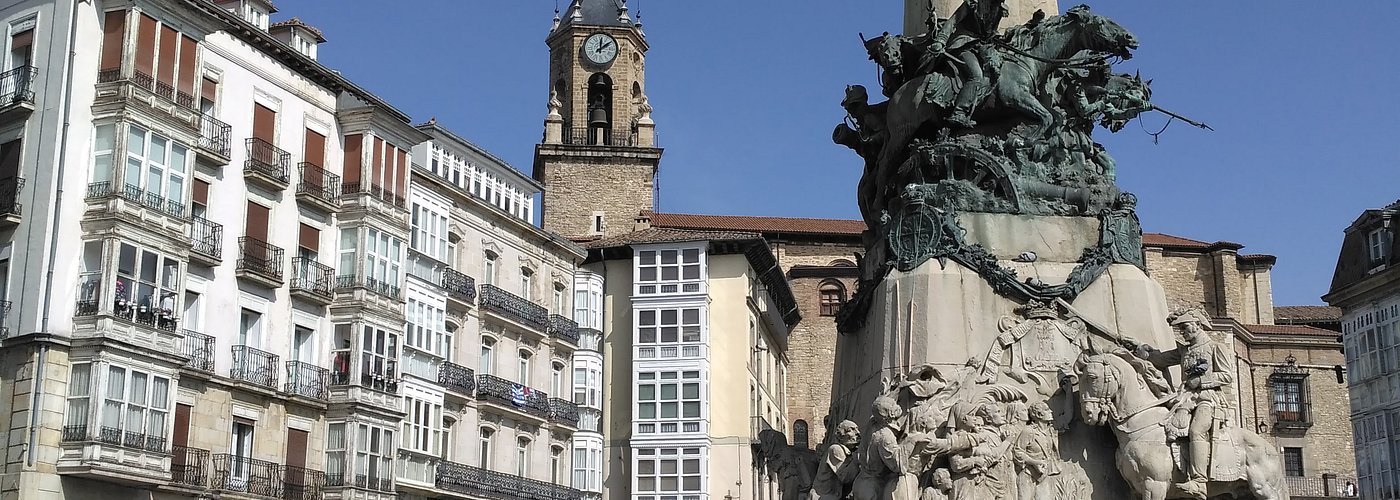
Essential Vitoria-Gasteiz

Vitoria-Gasteiz Is Great For
Historical tours.

Cultural Tours

Culinary Tours

Descargate tu Planificador de Viajes
Touristear Travel Blog
Síguenos en Instagram!
10 Best Things To Do in Vitoria-Gasteiz in 1-Day
Vitoria is a city that maintains a medieval part and a modern part decorated with colorful murals. It is less touristy than Bilbao or San Sebastián, giving the visit a special charm.
But, despite being less touristy, Vitoria has many things to offer visitors, so in today’s post, we tell you what to see in Vitoria-Gasteiz in one day and one night . Let’s go!
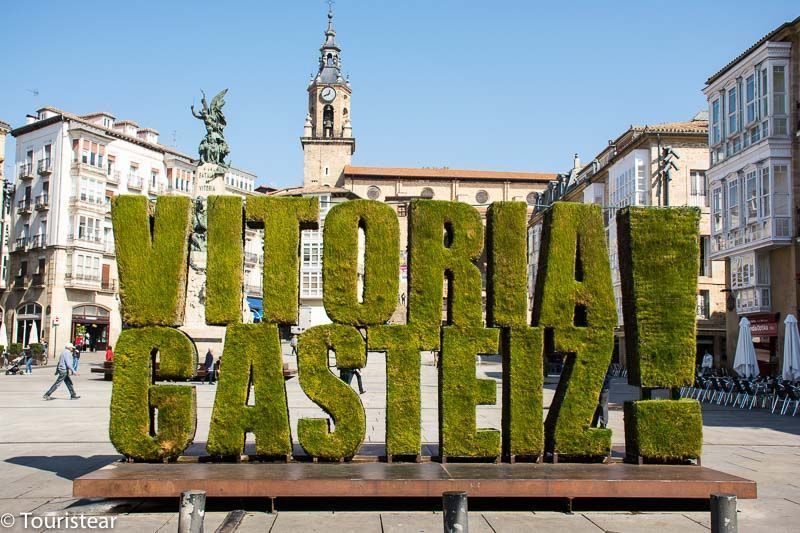
- Side Trip: La Rioja Wine Tour (English and Spanish speaking guide)
- La Rioja Wine Tour with Lunch (English and Spanish speaking guide)
Visit Vitoria-Gasteiz’ Medieval Almond
The part of the historic center of Vitoria is called the “almond” because it has an almond shape seen from above.
The 11th-century walls partly surround the Medieval Almond, and inside there are very well-preserved 15th-century buildings and watchtowers.
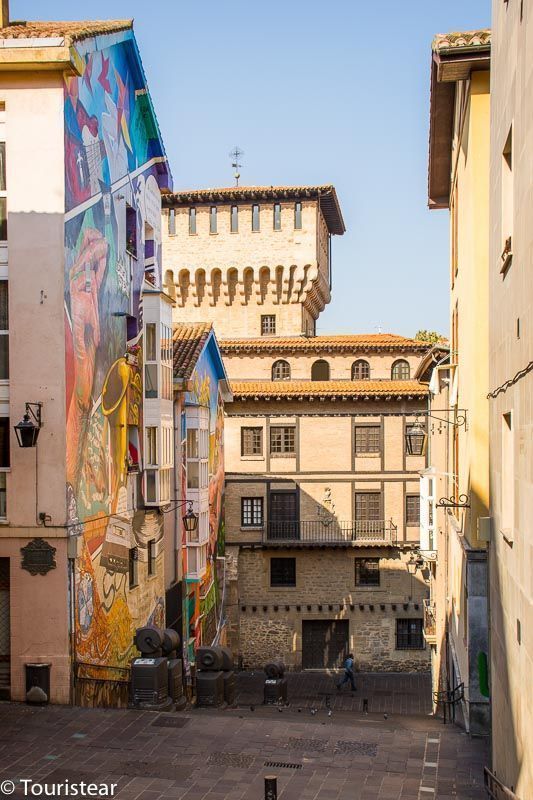
Also, in the old town, you can see Renaissance-style buildings such as the Palacio de Bendaña and Escoriaza-Esquivel.
And if you fancy green areas, Vitoria is surrounded by “the green ring” this area is well known for its parks and natural spaces. I’ll tell you more about it below.
The Medieval Almond of Vitoria
In the old town of Vitoria, you can see many exciting things; the best thing is to let yourself go and walk through its streets.
If you see a very high slope, don’t worry; they have mechanical treadmills to make the climb easier and effortless. You can also go up the stairs if you want.
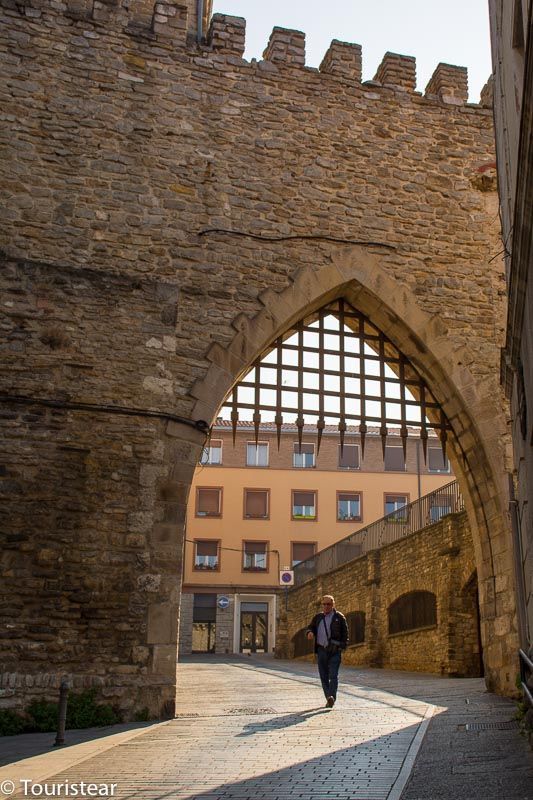
Inside the Almendra, you find the old cathedral, called Santa María Katedrala, the Tower of the “Hurtado de Anda,” and on the opposite side (it is a delightful walk).
You have several churches such as San Vicente Mártir, San Pedro and San Miguel Archangel.
Cathedral of Santa Maria of Vitoria
The Cathedral of Santa Maria is the old cathedral. There is a guided tour program called “Open for works.” With this visit, you will take a walk through the cathedral’s history, where you can discover the secrets of this building and the city.
If you did not know, it has been declared a World Heritage Site since 2015 .
Next to the cathedral, you can see the statue of Ken Follett, the writer of the Pillars of the Earth saga, who based his novel World Without End on this same cathedral.
In the Plaza de España is the tourist office, where you can ask for a map of the city and tourist information.
Plaza de la Virgen Blanca (White Virgin Square)
The Plaza de la Virgen Blanca communicates with the Plaza de España.
This is where you can find the Vitoria-Gasteiz sign, made as a vegetable sculpture. On Postas street, in the background, you can see the Church of San Miguel Arcángel.
In the center of the square, you can see a commemorative monument of the Battle of Vitoria .
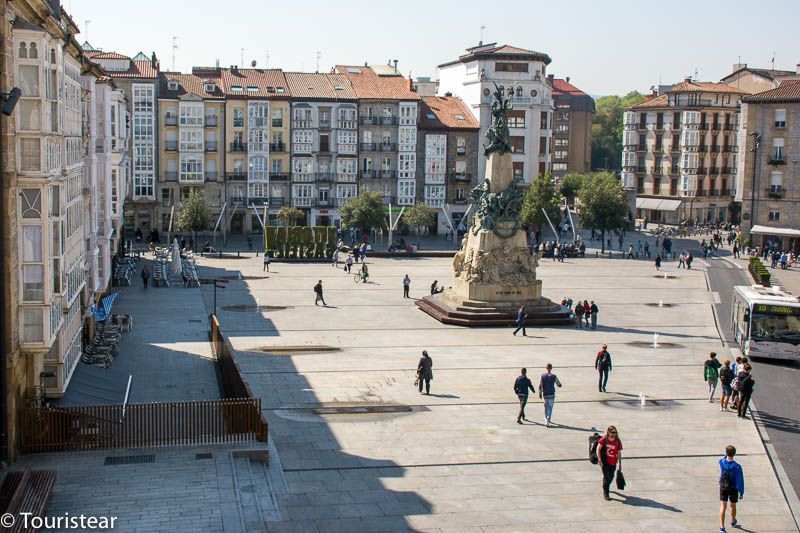
If you want, you can take a guided tour of the city of Vitoria (only in Spanish), it costs only €8 for adults (children under six years free and €6 from 6 to 10 years), and the visit starts from the tourist office in Plaza de Spain.
*Right now, this tour is only in Spanish. Take a look at the Tourism Office to see if they have guided tours in your language.
With the guided tour, you go through the historical center, the medieval wall to the Palace of Montehermoso, and the Cathedral of Santa María.
They also make several stops to tell a little about the history of the different buildings and monuments you will come across, such as the church of San Miguel Arcángel or the Palacio de Villa Suso.
If you like mysteries and legends, you cannot miss this night tour (only in Spanish for now) , where you will discover another history of Vitoria. It is also done through the historic center, and the meeting point is at the tourist office.
From the Plaza Virgen Blanca, you can visit the New Cathedral called María Inmaculada Madre de la Iglesia (Mary Immaculate Mother of the Church) and stroll through the Bishop Fernandez de Pierola Gardens, the Florida Park, and the Zulueta Palace.
The Green Ring: Anillo Verde
The “Anillo Verde” of Vitoria is a set of parks located around the city.
Since 1993 they have been rehabilitating the different parks and have turned a degraded area of the city into one of the favorite leisure spots for locals and visitors.
In addition, the Green Belt became a place of high ecological value.
The most fabulous place in the Green Ring of Vitoria-Gasteiz is Salburua Park. Here is the Nature Interpretation Center, where you will learn about flora and fauna of Alava. The best time to go is at sunset.
If you go by car, you can park very quickly. You can also go for a bike ride or by bus.
Route of the Murals
I was surprised by the large number of murals that I saw in the center of Vitoria. Of course, I knew there was a lot of street art, but I didn’t think it would be so pretty.
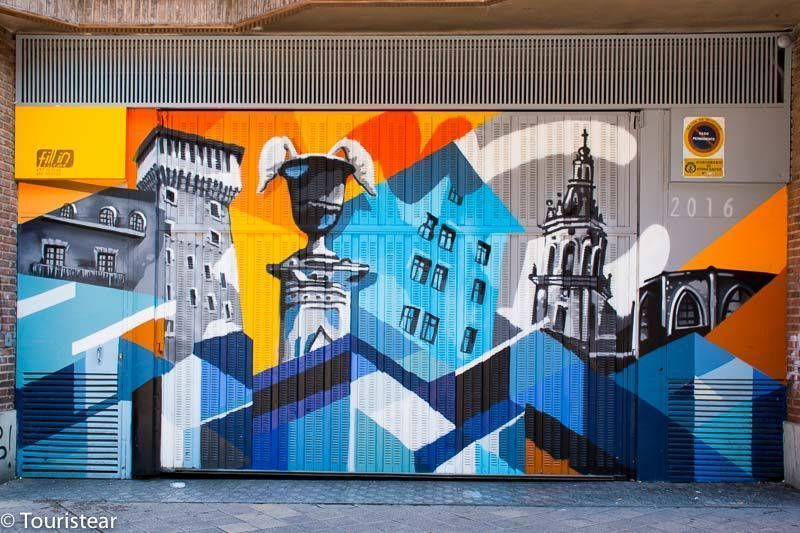
I wandered around Vitoria one weekday morning, looking for its murals touring the Almendra.
These were created through collective workshops in which many of its inhabitants participated.
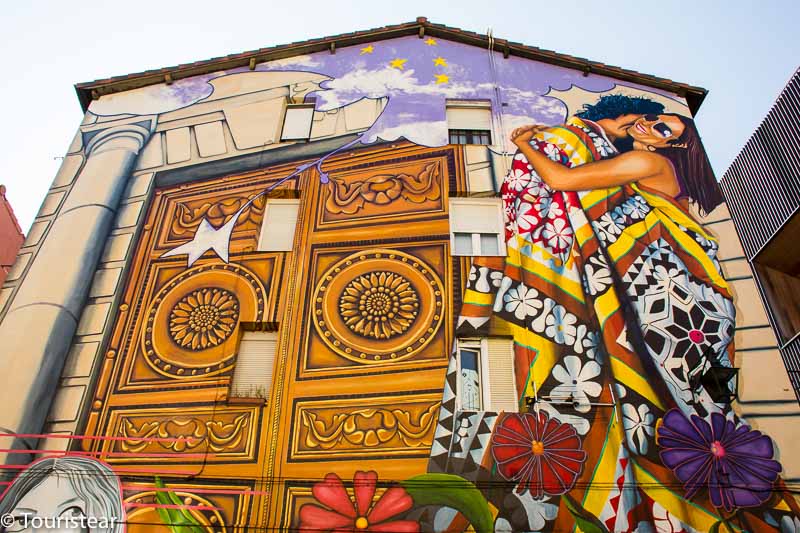
I could tell you in this post street by the street where to go, where to turn, but I think I would lose the fun of looking for the Murals. At least for me! I never pay attention to the itineraries that indicate you street by street.
Must-Visit Places in Vitoria-Gasteiz
This section will guide you through the best places to visit in Vitoria to enjoy this city and not miss anything to see.
Museums of Vitoria-Gasteiz
Museum of fine arts.
Looking at it from the outside, it is beautiful: a building built in 1912. At first, it was a private residence of Augustin-Zulueta .
It is surrounded by gardens and inside full of works of art, including the deposits of the Prado Museum.
Near the Museum of Fine Arts is the Museo de la Armería , where you can find weapons from medieval times found during archaeological excavations in northern Spain. There are also exciting pieces from Africa and Japan.
Artium Museum, Basque Museum of Contemporary Art
It is one of the most important museums of contemporary art in Spain . In the permanent collection, you can see more than 3 thousand works! In addition, it is a cultural center that organizes artistic activities and international exhibitions.
It is quite visible in the city’s center, in a modern building. Go to the Museum page and check if there are activities of interest for your travel dates.
Fournier Playing Card Museum
Yes, just like that: this museum probably houses the best collection of playing cards globally. In addition, it is located in the Bendaña Palace , from the 16th century, in the heart of Medieval Almond. In a recently built building, right next door, is the Archaeological Museum . Here you can see the discoveries in the area from prehistory to the Middle Ages.
Museum of Natural Sciences
This museum houses the Torre de Doña Ochanda , a strong house from the end of medieval times.
Inside, you can see:
- the exhibition on the amber deposits of Álava (one of the most important in the world!),
- the fossils found in the area of the Alava capital
- and a collection of Spanish minerals from the 20th century.
Palaces of Vitoria-Gasteiz
Walking through Vitoria, it is very easy to come across old palaces from different eras.
Apart from the Palace of Augustín-Zulueta, which houses the Museum of Fine Arts, I recommend that you take a look at these magnificent buildings:
Escoriaza-Esquivel Palace
Built-in the 16th century, it is one of the best examples of Basque Renaissance architecture and the best preserved of the 7 Renaissance palaces in Vitoria.
It is located within the Old Town, a few meters from the Cathedral of Santa María.
Cordon House
It’s located on Calle Cuchillería, so it’s easy to go unnoticed among all the bars and restaurants 😉 It’s a medieval gothic-style tower , rebuilt into a palace at the end of the 15th century.
But it is worth going inside, since the main room’s ceiling is impressive and, in addition, it has an exhibition of popular Basque furniture.
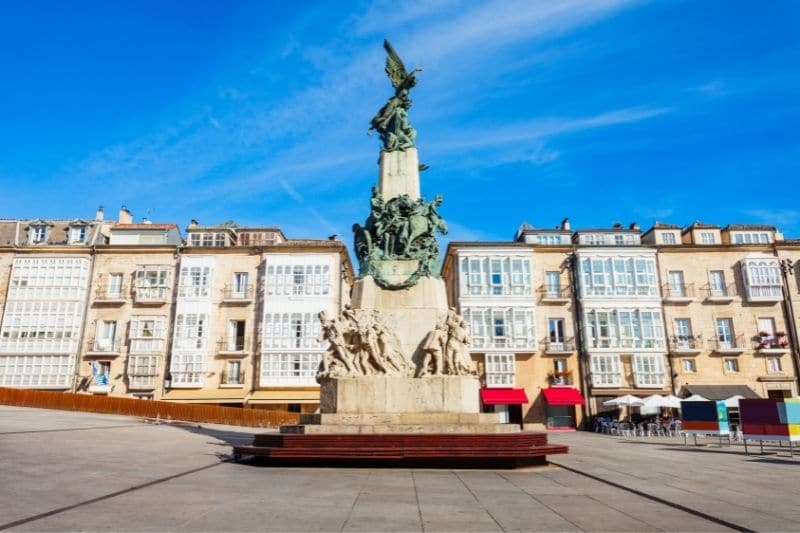
Zulueta Palace
Like a few others in the area, this building was built at the beginning of the 20th century, thanks to the money earned by adventurers in Cuba.
It is located near the Museum of Fine Arts, and the most beautiful path that leads from the Medieval Almond to the palace is along the Paseo de la Senda .
It is an outdoor route of about 3 km in the middle of nature, with banana trees providing shade on summer days.
It’s worth it, as Vitoria came first in the 2012 European Green Capital contest (it’s the only Spanish city with this title!).
Strolling through Vitoria-Gasteiz
Vitoria is a relatively small city and perfects to visit on foot. You are going to visit the most exciting places that are outside the Medieval Almond and its Walls.
Cuchillería, Correría and Herrería streets
They are located just past the Walls surrounding the Medieval Quarter . Their names come from the artisans who lived and worked there.
They invite you to visit them, take a walk, look at the old houses (already restored), and stop at their many bars and restaurants. On Cuchillería street are the Casa del Cordón and the Fournier de Naipes Museum .
To the north, Calle Cuchillería becomes Calle Chiquita and where it joins Calle Correría we find the Plaza de la Burullería .
You can see the Torre de Los Hurtado de Anda , built in the 15th century in a Gothic style. It is one of the oldest buildings currently preserved in Vitoria. It was part of the defensive construction of the city.
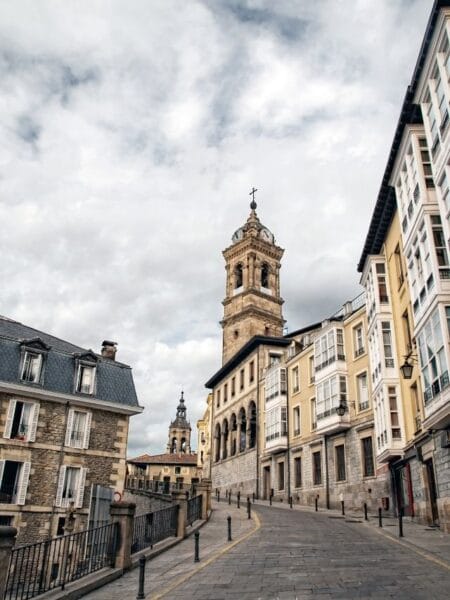
Going south along Correría street , you arrive at Plaza del Machete . Its name is due to the machete on which the representatives of Vitoria used to swear their positions.
It is a perfect place to take a break in a bar with views of the 16th-century Palace of Villa Suso .
Going further south is Plaza España , also called Plaza Nueva. It is a square surrounded by buildings and arcades. The City Hall of Vitoria, built in neoclassical style, is located there.
You arrive at the Plaza de Los Fueros, following the road with the Monument to the Fueros.
It is located south of the Old Town of Vitoria. It has a peculiar triangular shape, and in August, it hosts the festivities of the city’s patron saint, La Virgen Blanca , with concerts and other cultural initiatives.
Green Areas
Vitoria-Gasteiz is a green city thanks to the parks, trails, and a ring of nature surrounding it. In recent years, much importance has been given to these areas; they have been developed and cared for with love.
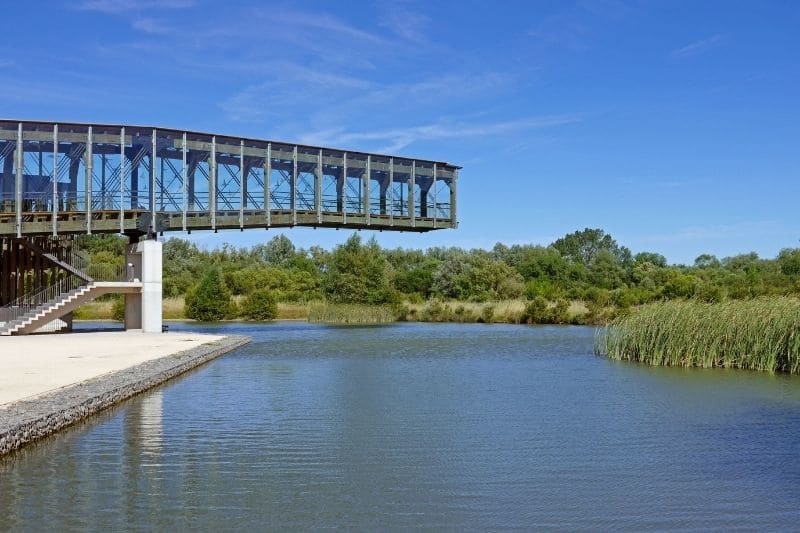
Walking through the streets of this Basque city, it is impossible not to enjoy the green corners that it offers.
Apart from the Paseo de la Senda that connects the Historic District with the Museum of Fine Arts, I recommend that you breathe fresh air in the Parque de la Florida , which is located next to said Paseo.
Florida Park
Built in 1820, it recalls romantic parks in the French style of the time. Its labyrinth-shaped paths pass through various points of interest, such as the kiosk, the grotto, the waterfall, the stream, or the lovers’ bench.
It has a gigantic Nativity scene with more than 200 life-size figures during Christmas.
Oh, and if you’re looking for love, remember that there’s a tree there that, according to tradition, helps single people find their better half 🙂
Botanical Garden
The Olarizu Botanical Garden is located in the Basque capital’s Green Belt. The best time to visit it is, without a doubt, in spring, since it is when you can appreciate all the colors it offers.
It is a vast park; it extends over more than 120 hectares, an ideal place to rest, gather strength, and, incidentally, learn about nature.
- Tours around Vitoria-Gasteiz
Gastronomy: Where to eat in Vitoria-Gasteiz?
The gastronomy of the Basque Country is well known, and in Vitoria, it was not going to be less. There are more than 20 tapas routes! Ask for your route at the tourist office.
You can also go into the places that most catch your attention and make your route or go with a guide and do the Pintxos tour, including six pintxos and three drinks.
You can try the famous Basque pintxos that leave no one indifferent, or you can order “raciones” or a menu, depending on your budget or what you want. Also, if you go on Thursdays, there is the “pintxo pote,” the best-known street for the “ poteo ” is Cuchillería street.
Vitoria seemed a little cheaper than San Sebastián and Bilbao regarding gastronomy, and we ate wonderfully.
Where to Stay?
We stayed at the AC Hotel General Alava . It is not in the heart of Almendra, but it is well located (about 5 minutes from the cathedral) and has parking.
In addition, there is a free parking space in the area behind the hotel on Chile street.
The hotel rooms are OK, the bed is comfortable, and the wifi worked surprisingly well for us. It is evident that it is next to the congress building, and they have many business clients here.
Book Your Trip Here!

Find a Hotel
On Booking.com

Book Your Tours
Get Your Guide

Find Flights
Via Skyscanner.

Get Travel Insurance
On HeyMondo

Via Discovercars

Stay Online
Plan your trip through the basque country.
- Best Things To Do in Bilbao?
- Road Trip through the North of Spain
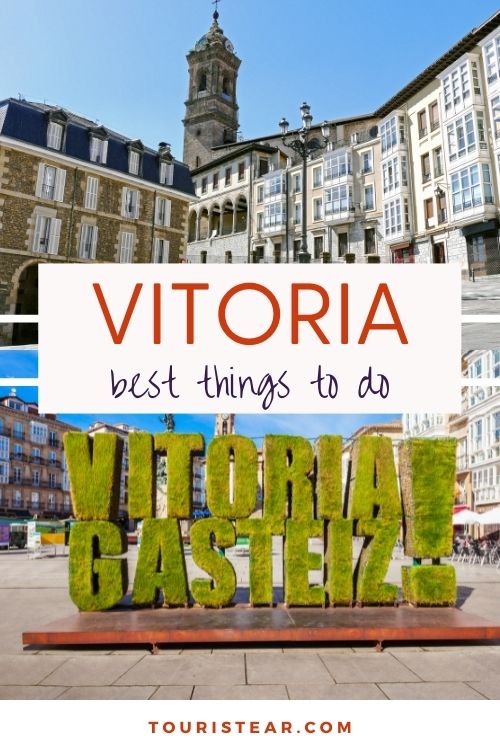
Last Updated on 22 September, 2023 by Veronica
Disclosure: Some of the links on this post are affiliate links, meaning at no additional cost to you, I may earn a small commission if you click through and make a purchase.
Author: Veronica
Vero, a seasoned traveler, has explored 25 countries and lived in five, gaining a rich perspective and fostering an infectious passion for travel. With a heart full of wanderlust, Vero uncovers the world’s hidden gems and shares insights, tips, and planning advice to inspire and assist fellow adventurers. Join Vero and let the shared passion for travel create unforgettable memories.
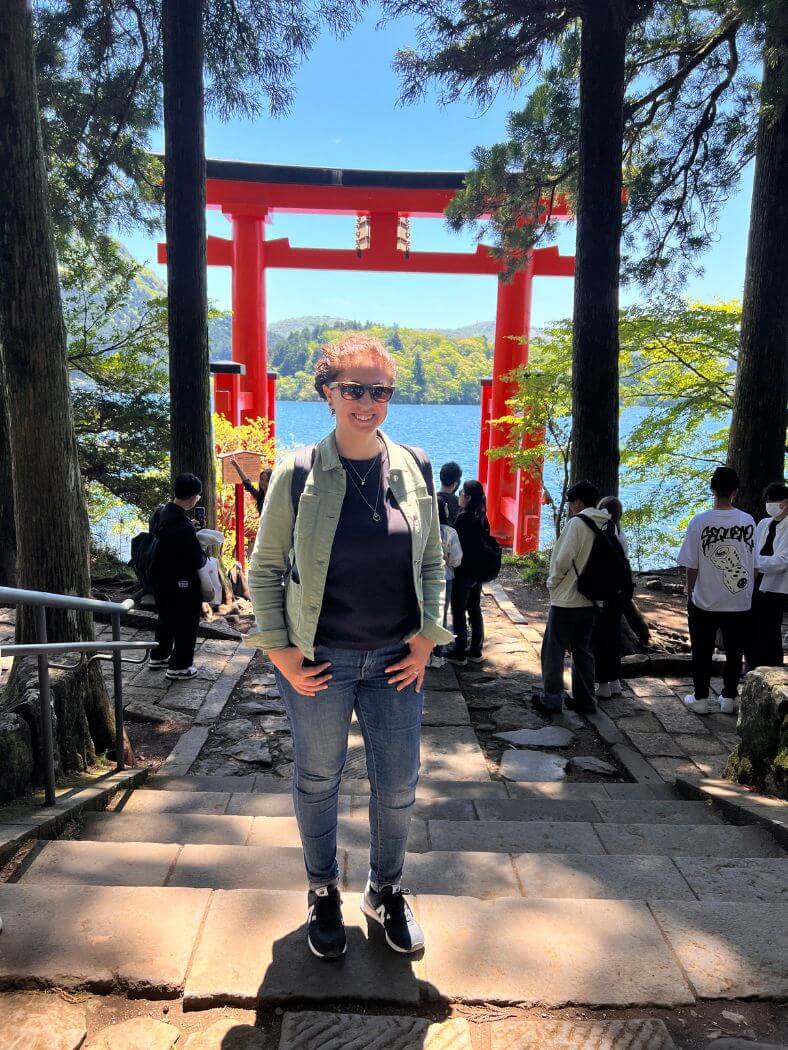
Soy Verónica, una apasionada de los viajes, me gusta compartir mis experiencias viajeras en mi blog. He estudiado Empresas y actividades turísticas y ando metida en el mundo del Marketing Digital. Me gusta aprender algo nuevo cada día, conocer nuevos lugares y culturas diferentes.
Similar Posts
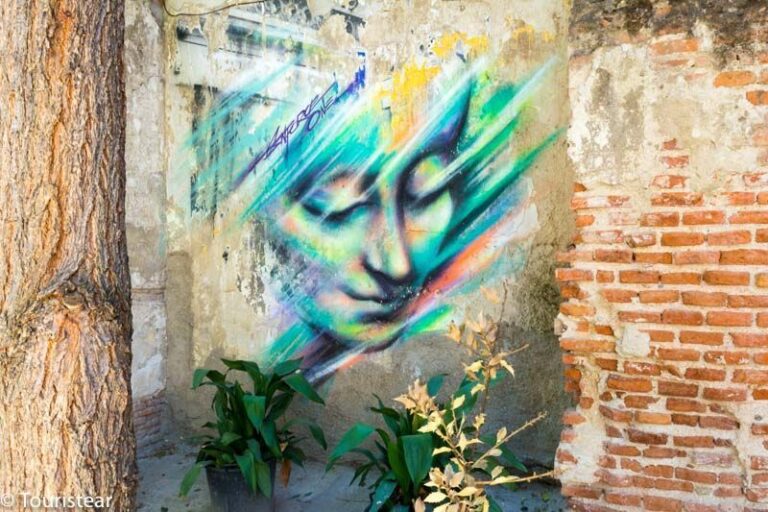
Walk Around Lavapiés, Sol and El Rastro de Madrid
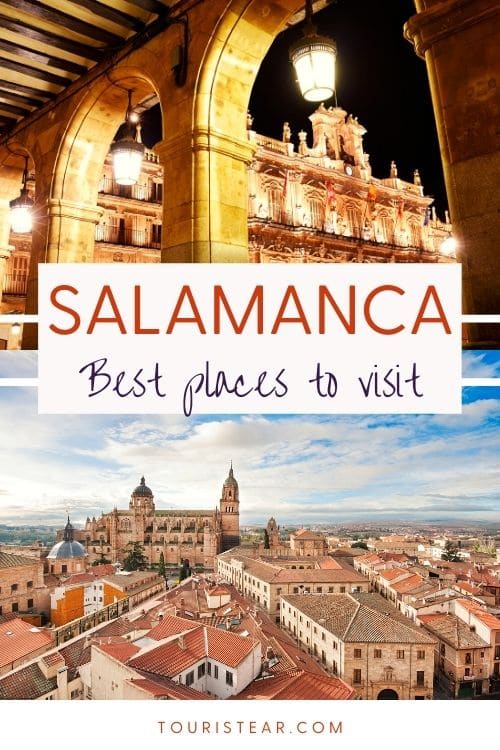
15 Best Things to Do in Salamanca in 1-Day
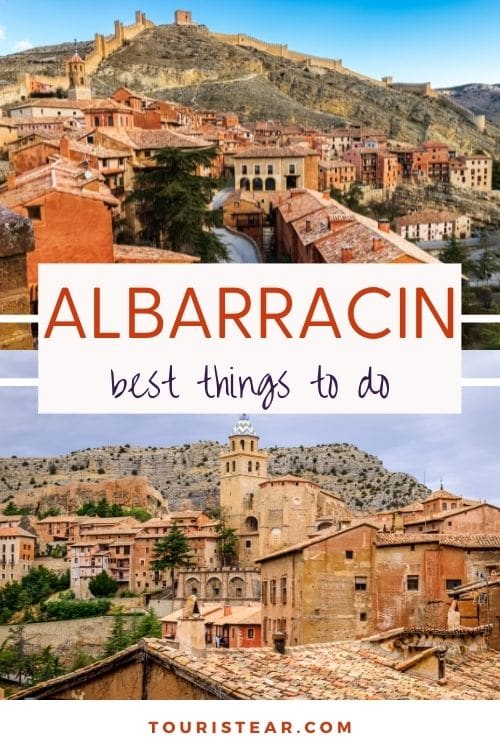
Visiting Albarracin, the Most Beautiful Town in Spain
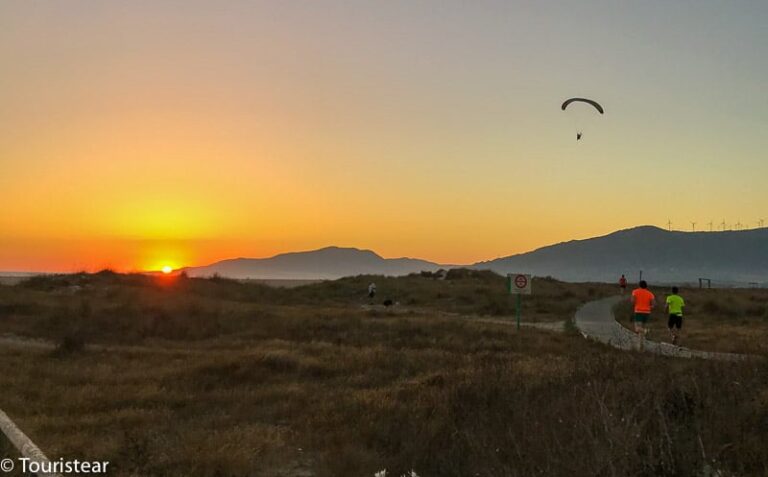
10 Best Things To Do in Tarifa (Cadiz, Spain)
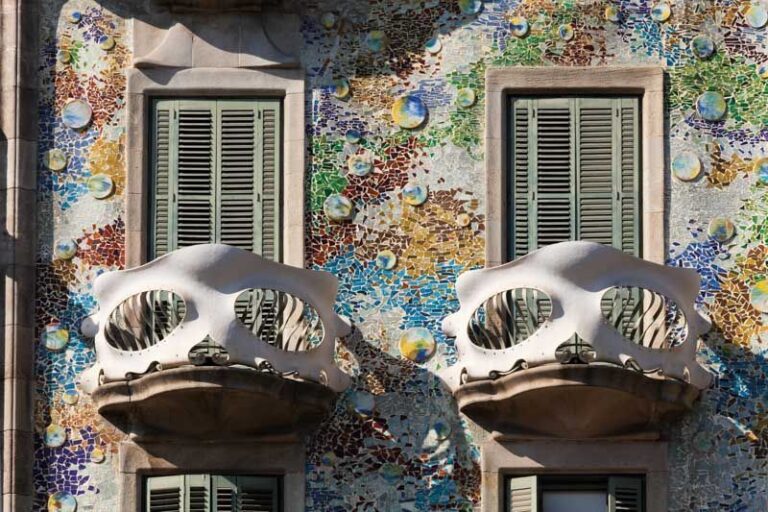
How to Get Around Barcelona: Tourist Bus, Metro, and Walking
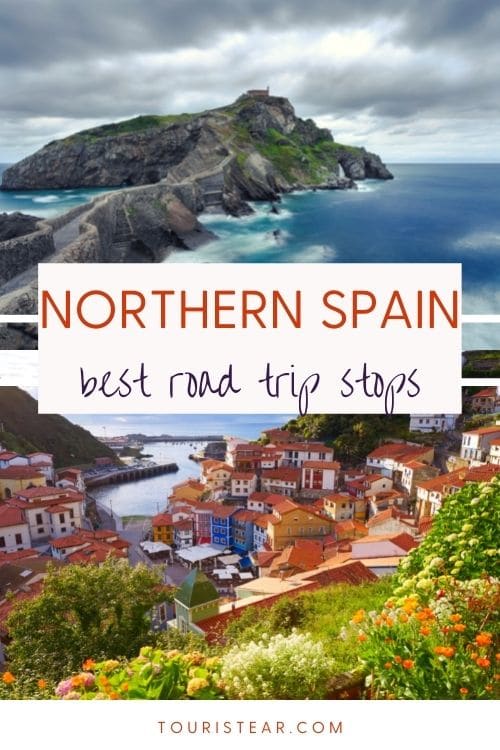
Road Trip Through the North of Spain
Leave a reply cancel reply.
Your email address will not be published. Required fields are marked *
Save my name, email, and website in this browser for the next time I comment.
This site uses Akismet to reduce spam. Learn how your comment data is processed .
Enjoy, every day, the best we have
New tourist map of Vitoria-Gasteiz

Activities , Álava , Capitals , Travel
The Vitoria-Gasteiz City Council has renewed the map that is handed out free of charge to visitors and congress participants. The new edition includes the parks of the Green Belt , information on accessibility, the Senda and Camino de Santiago routes, and other urban planning updates.

Published in four languages -spanish, basque, english and french- those who, from now on, come to the capital of Alava will have this practical tourist map-sheet with the most important tourist resources of the city. The new edition includes the parks of the Green Belt, information on accessibility, the Senda and Camino de Santiago routes, and other urban planning updates .
www.vitoria-gasteiz.org
Subscribe to our Newsletter
We have the best quality tourism content and we deliver it to your inbox every fortnight.
Te va a encantar

- The Good Life
“Life has had a funny way of surprising me all the time”
Raquel Balencia, a former model and haute couture designer from San Sebastian, had already been around the world as a model at the age of 25. She has modelled for Dior and Valentino, and now, in her new stage as a haute couture designer, she is returning to her San Sebastian roots. She tells us about it in this exclusive interview for BasqueMagazine.

Fancy discovering the Basque Country at the wheel of a Ferrari?
How about crossing the Basque coast at the wheel of one of the best Ferraris around? Based in Biarritz, Crosa Prestige is a car rental service for the iconic Italian brand.

Fireworks illuminate Bilbao once again
From half past ten at night until 27 August, the classic ‘Aste Nagusia’ fireworks will dress the Biscayan capital in light and colour at the 30th edition of the Villa de Bilbao International Fireworks Competition.

Discover the fun side of science
Learning science has never been so much fun. Come and have a great time at Eureka! Zientzia Museoa, an unbeatable plan for everyone.

- Vitoria-Gasteiz
- Events and Festivals
Kaldearte. International Street Art Show
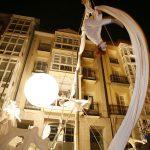
Ciclo de Flamenco. Siglo XXI.
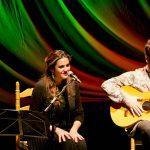
Large Concerts Programme
February, March, April, May.
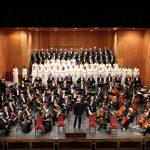
San Prudencio – Tamborrada
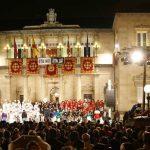
Martín Fiz International Marathon
Festval. vitoria-gasteiz radio and tv festival.
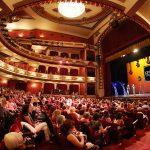
Azkena Rock Festival
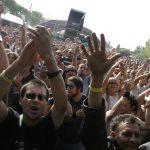
Vitoria-Gasteiz International Jazz Festival
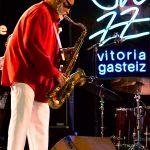
Day of the “Blusa”
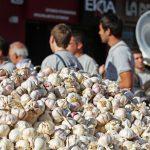
Vitoria-Gasteiz Triathlon
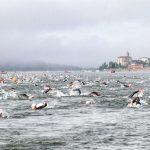
Festivals of The Virgen Blanca
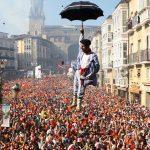
Magialdia – International Festival of Magic

Vitoria-Gasteiz Medieval Market
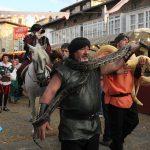
International Theatre Festival
October & November
World Press Photo

Night of the candles, frozen slides and the monumental Nativity scene
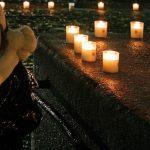
Half Vitoria-Gasteiz Marathon
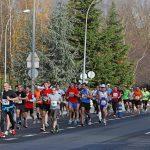
- Active Tourism
- Monuments and Singular Buildings
- Thalassotherapy

IMAGES
VIDEO
COMMENTS
Vitoria-Gasteiz gets international certification as a destination for sustainable tourism, Biosphere Responsible Tourism. Another of the treasures Vitoria-Gasteiz has to offer is what is known as the Mediaeval Almond, so-called because of its shape, one of the finest old quarters in the Basque Country. The Cathedral, a Gothic literary star
In fact, Vitoria-Gasteiz has 42 square meters of green areas per person, with more than 170 kilometres of bike lanes, over 115,000 trees lining its streets and city parks and 100-year-old trails such as the Paseo de la Senda. Culture, gastronomy and outskirts Vitoria offers a jam-packed
The capital of Euskadi, Vitoria-Gasteiz, has achieved the distinctions of Biosphere Destination Certification as a sustainable tourist destination in 2016, National Capital of Gastronomy 2014 and European Green Capital 2012. The city gathers a rich heritage with its recently restored Cathedral of Santa Maria and a first-class Historic Town Hall ...
Top Attractions in Vitoria-Gasteiz. Map. See all. These rankings are informed by traveler reviews—we consider the quality, quantity, recency, consistency of reviews, and the number of page views over time. 2023. 1. Catedral de Santa Maria. 1,579. Religious Sites. By T3957JDlaurai.
Vitoria-Gasteiz isn't on the tourist radar yet and that only adds to its appeal and authenticity. Vitoria-Gasteiz is the most modest of all the Basque cities. It doesn't have a fancy beach like San Sebastian nor a Guggenheim Museum like Bilbao and because of this it is often overlooked. But don't be so quick to skip it.
Located in the heart of the city, it acts as a bridge between the historic centre and the modern town. 7. Visit the Iglesia de San Miguel. The Iglesia de San Miguel Arcángel is located in Vitoria's Casco Viejo, or Old Town - a gothic church, it was constructed during the 14th century.
Top Attractions in Vitoria-Gasteiz. Map. See all. These rankings are informed by traveller reviews—we consider the quality, quantity, recency, consistency of reviews, and the number of page views over time. 2023. 1. Catedral de Santa Maria. 1,578. Religious Sites. By T3957JDlaurai.
7 reasons to visit us - Tourism in Vitoria-Gasteiz. Discover a city with over eight centuries of history, with 42 square meters of green areas per habitant and an extensive wine and fine food tradition.Here are seven spaces and proposals for enjoying Vitoria-Gasteiz. 1. Plaza de la Virgen Blanca
SergioR1. Eastbourne, UK286 contributions. 2. Beautiful Fine Arts museum. Vitoria's Fine arts provincial museum is as beautiful outside as in the inside. The entrance fee is free. Most of the art are paintings by Basque & Spanish painters with connections with the region. There is a strong interest in landscapes & traditions. The building is in ...
42°50′47″N 2°40′18″W. Map of Vitoria-Gasteiz. A path in the Bosque de Armentia. In the south of the Basque Country, Vitoria-Gasteiz is a city without sea. To the north, 66 km away is the city of Bilbao, and 114 km away is the beautiful city of San Sebastian. The south part of Alava province, is called La Rioja Alavesa, where the ...
Tourism Vitoria-Gasteiz. Carrusel. I ♡ Wine Tourism. Discover a city that welcomes you to a route of more than 400 wineries. The Green Belt. Hiking, birding and other activities in the large parks surrounding the city. Historical Heritage. Palaces, streets and temples in a millenary city.
24,249. PLAN YOUR TRIP. Vitoria-Gasteiz. Though often overlooked in favor of its coastal neighbours, Vitoria-Gasteiz rewards visitors with generous green spaces, historical architecture, and a vibrant dining scene. Plus, easy access to the region's mountain reserves makes the Basque capital an ideal launch pad for wider exploration of ...
Vitoria-Gasteiz. Though often overlooked in favor of its coastal neighbors, Vitoria-Gasteiz rewards visitors with generous green spaces, historical architecture, and a vibrant dining scene. Plus, easy access to the region's mountain reserves makes the Basque capital an ideal launch pad for wider exploration of northern Spain.
Vitoria-Gasteiz Tourist Office. Visiting the most emblematic corners of Alava's capital is much easier thanks to its tourist office. Apart from providing tourist information it arranges guided tours around the city and thematic visits focusing on museums, towers or churches. The amount of guided tours varies depending on the season. In addition ...
Plaza de la Virgen Blanca (White Virgin Square) The Plaza de la Virgen Blanca communicates with the Plaza de España. This is where you can find the Vitoria-Gasteiz sign, made as a vegetable sculpture. On Postas street, in the background, you can see the Church of San Miguel Arcángel.
Useful information - Tourism in Vitoria-Gasteiz. Vitoria-Gasteiz is the capital city of the Basque Country and of Álava territory. It is a compact medium-size city of 250,000 inhabitants, located in an area of great biological and landscape richness which provides it with a high quality of life.. The Weather
The Basque coastline is unique because of the relationship between land and sea there. With its protected biotopes, wetlands and several nearby nature parks, the Basque coastline is an ideal destination for anybody looking to enjoy the best of the sea in a natural setting. Here in the Basque Country we have the best city beaches - and the most ...
The Vitoria-Gasteiz City Council has renewed the map that is handed out free of charge to visitors and congress participants. The new edition includes the parks of the Green Belt, information on accessibility, the Senda and Camino de Santiago routes, and other urban planning updates. Published in four languages -spanish, basque, english and ...
A range of tourism resources for Vitoria-Gasteiz, with extensive information on its historical, patrimonial and natural wealth and its dedication to sustainability. Date of publication: 2024. Languages: Spanish, Basque, English and French. Guide of the city . Tourist maps. The city's most important tourism resources. Digital tourist map ...
Vitoria-Gasteiz (Spanish: [biˈtoɾja ɣasˈtejθ,-ɣasˈtejs]; Basque: [bitoɾja ɣas̺teis̻]), also alternatively spelled as Vittoria in older English-language sources, is the seat of government and the capital city of the Basque Country and of the province of Álava in northern Spain. It holds the autonomous community's House of Parliament, the headquarters of the Government, and the ...
Guided tours - Tourism in Vitoria-Gasteiz. Get to know Vitoria-Gasteiz hand in hand with professional guides, on routes designed so that you enjoy a city which has been certified as a Sustainable Tourism Destination as much as possible. The capital of the Basque Country has also received the Global Green City and European Green Capital awards.. Visits to the Santa María Cathedral
C/Pintor Pablo Uranga, 10B. Tel.: +34 945 218 178. 01008 Vitoria-Gasteiz.
Turismo Vitoria-Gasteiz . Carrusel. I ♡ Enoturismo. Descubre una ciudad que te da la bienvenida a una ruta de más de 400 bodegas. Anillo Verde. Senderismo, birding y otras actividades en los grandes parques que rodean la ciudad. Patrimonio histórico. Palacios, calles y templos de una ciudad milenaria.